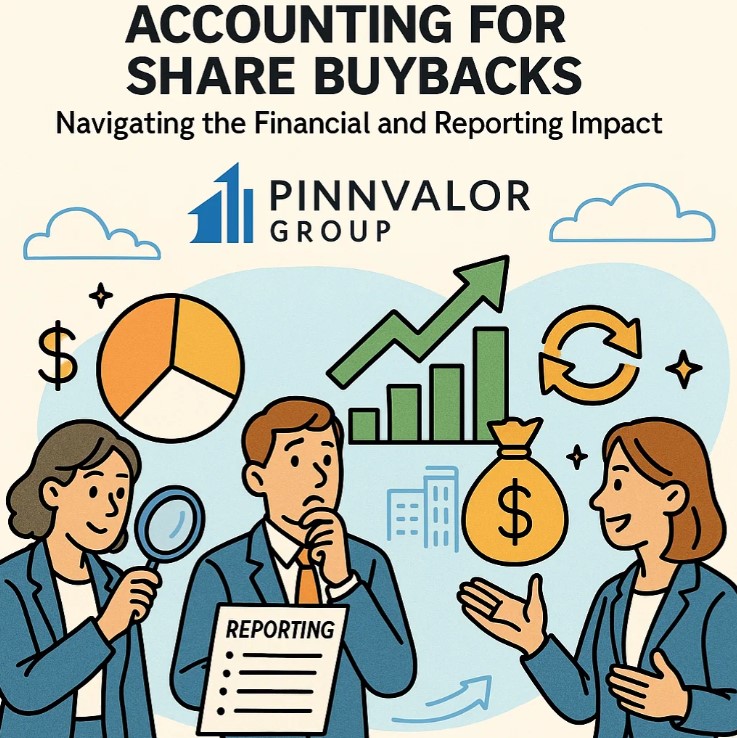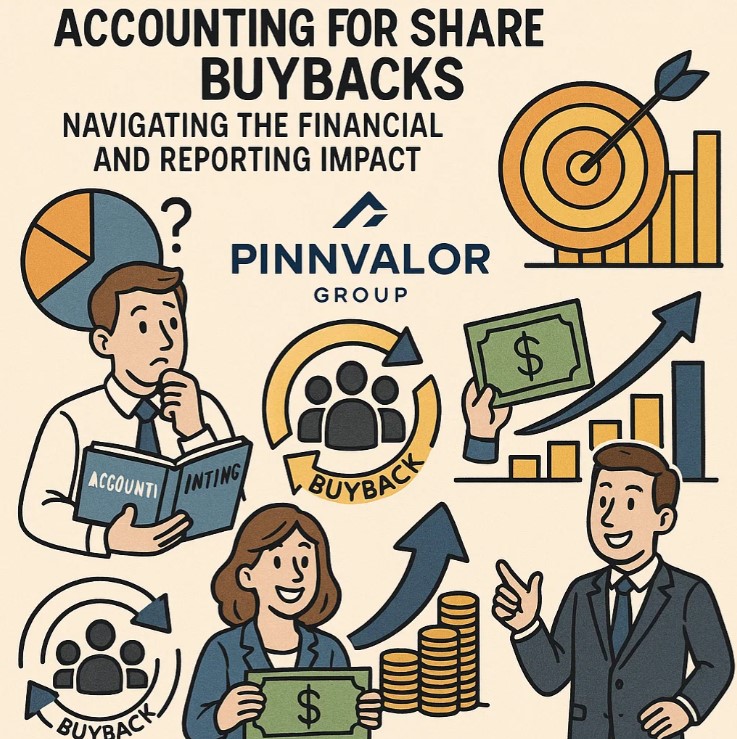
Accounting for Share Buybacks: Navigating the Financial and Reporting Impact
Share buybacks (share repurchases) are widely used to return surplus cash, signal confidence, and optimize capital structure. Correct accounting is essential to ensure transparency, compliance, and informed investor interpretation.How do share buybacks reshape a company’s financial health and reporting story?
Behind every share repurchase lies a story: reduced equity, altered ratios, and a stronger signal of confidence to the market.
Why Do Companies Opt for Share Buybacks?
Enhance shareholder value: Reduces outstanding shares and can improve EPS.
Deploy surplus cash: Useful when attractive growth opportunities are limited.
Signal confidence: Management may indicate the stock is undervalued.
Adjust capital structure: Helps reach a target debt–equity mix.
Accounting Overview
Buybacks are recorded as a reduction in shareholders’ equity—not as an asset. Presentation depends on the method and jurisdiction.
Treasury Stock Method (Common under U.S. GAAP)
Repurchased shares are recorded in a contra-equity account: Treasury Stock.
Acquisition cost (price + eligible costs) reduces equity; treasury shares don’t receive dividends or EPS.
Journal Entry on Purchase:
Dr. Treasury Stock XXX
Cr. Cash XXX
On Reissuance:
Dr. Cash XXX
Cr. Treasury Stock XXX
Cr./Dr. Additional Paid-in Capital (if above/below cost)
Cancellation Method (Common under IFRS and Some Jurisdictions)
Repurchased shares are immediately cancelled; share capital is reduced.
Excess of buyback price over face value is adjusted against reserves (e.g., securities premium, retained earnings).
Journal Entry on Cancellation:
Dr. Share Capital XXX
Dr. Securities Premium / Reserves XXX
Cr. Cash XXX
Financial Statement Impact
Balance Sheet: Cash decreases; equity decreases (treasury stock or reduced share capital).
Statement of Profit & Loss: No direct expense recognition; EPS may increase due to lower weighted average shares.
Cash Flow Statement: Outflow under Financing Activities.

Regulatory & Compliance Considerations
Source of funds: Typically free reserves, securities premium, or specific proceeds as permitted by law.
Limits & approvals: Caps on percentage of capital, board/shareholder approvals, cooling-off periods.
Disclosures: Number/value of shares bought back, method (open market/tender), post-buyback share count, and EPS impact.
Strategic & Investor Implications
Positive signal: Can boost market confidence and price.
Ratio effects: Improves EPS and sometimes ROE; investors should assess quality of the EPS uplift.
Trade-offs: Excessive buybacks may crowd out R&D/capex or weaken liquidity in downturns.
Illustrative Example
A company with 10,000,000 shares repurchases 500,000 shares at ₹200 each.
Cash outflow: ₹100 crore.
Outstanding shares post-buyback: 9,500,000 (treasury or cancelled).
EPS effect: If earnings remain ₹50 crore, EPS rises from ₹5.00 to about ₹5.26.
Best Practices for Finance Teams
Model the impacts: Simulate EPS, ROE, leverage, and covenant headroom.
Document the rationale: Capital allocation framework and alternatives considered (dividends, debt reduction, capex).
Maintain transparency: Clear disclosures on timing, method, and reissuance/cancellation plans.
Align with policy: Ensure buybacks fit within long-term strategy and liquidity buffers.
Conclusion
Share buybacks are a potent capital allocation tool with material accounting and reporting consequences. Whether using the treasury stock method or immediate cancellation, accurate entries, clear disclosure, and thoughtful strategy help stakeholders read the company’s true financial story.
